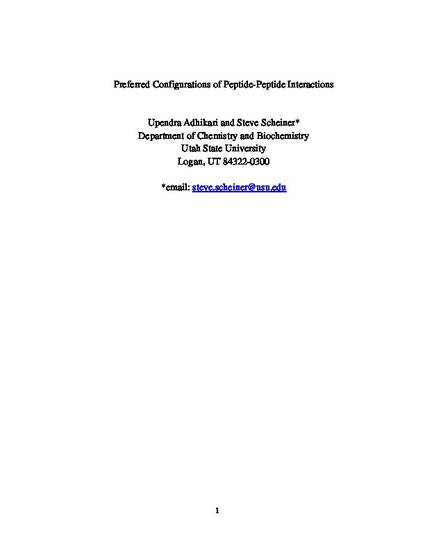
The natural and fundamental proclivities of interaction between a pair of peptide units are examined using high-level ab initio calculations. The NH···O H-bonded structure is found to be the most stable configuration of the N-methylacetamide (NMA) model dimer, but only slightly more so than a stacked arrangement. The H-bonded geometry is destabilized by only a small amount if the NH group is lifted out of the plane of the proton-accepting amide. This out-of-plane motion is facilitated by a stabilizing charge transfer from the CO π bond to the NH σ* antibonding orbital. The parallel and antiparallel stacked dimers are nearly equal in energy, both only slightly less stable than the NH···O H-bonded structure. Both are stabilized by a combination of CH···O H-bonding and a π→π* transfer between the two CO bonds. There are no minima on the surface that are associated with Olp→π*(CO) transfers, due in large part to strong electrostatic repulsion between the two O atoms, which resists an approach of a carbonyl O from above the C═O bond of the other amide.
